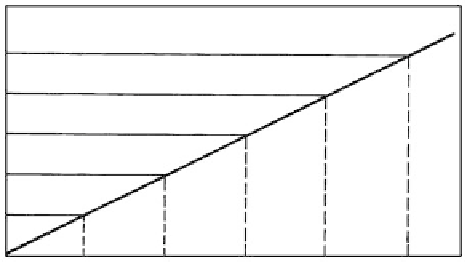Environmental Engineering Reference
In-Depth Information
Unstable
Dangerously high
Very high
High
Significant
Low
0
0.2
0.4
0.6
0.8
1.0
3
3 x major principal stress
σ
1
Rock stress index =
=
q
u
uniaxial compressive strength
FIGURE 6.66
Significance of residual stress and excavation wall stability in terms of uniaxial compressive strength. (From
Hawkes, I.,
Proceedings of the 1st International Congress International Society for Rock Mechanics
, Vol. 3, 1966,
Lisbon. With permission.)
near-circular openings in rock. In prismatic openings, stress concentrations occur around
corners and the stress fields are complex.
Stability Rating Criteria
Hawkes (1966) evaluated the potential for instability and related the ratio of the intact rock
stress (
σ
1
the residual stress) to the uniaxial compressive strength (termed the rock stress
index), and to the major principal stresses. His stability rating system is given in Figure 6.66.
6.7
Alteration of Rock
6.7.1
General
Significance
Various rock types decompose to characteristic soil types. The type of residual soil (active
to inactive) and the approximate depth to fresh rock at a given location are generally pre-
dictable if the climate, topography, and basic rock type are known and the processes of
rock alteration are understood.
Definitions
Alteration
refers to any physical or chemical change in a rock or mineral subse-
quent to its formation (Rice, 1954).
●
Weathered rock
has undergone physical and chemical changes due to atmospheric
agents.
●
Disintegration
refers to the breaking of rock into smaller fragments, which still
retain the identity of the parent rock, through the action of physical agents
(wind, water, ice, etc.).
●





